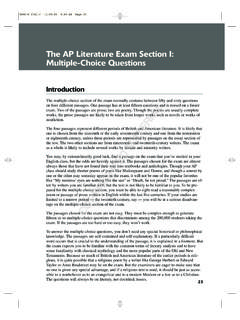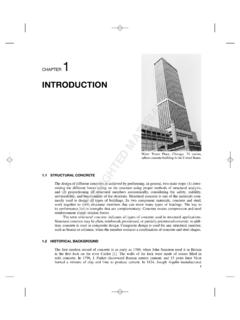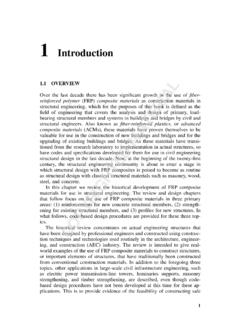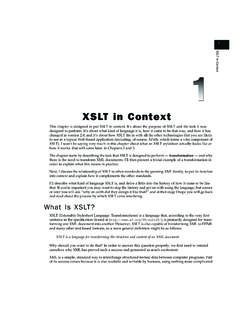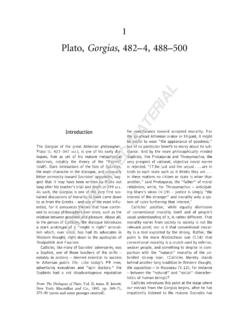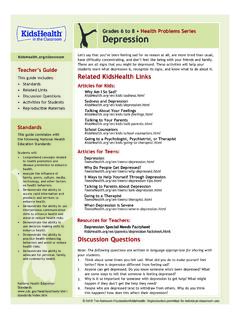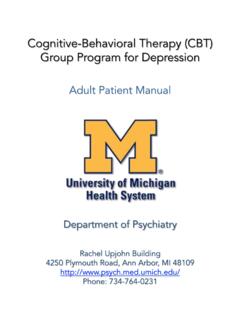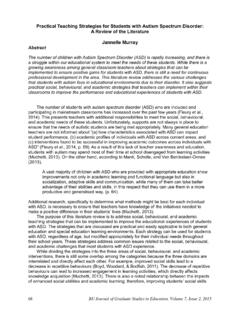Transcription of ADJUSTMENT DISORDER WITH DEPRESSION OR ANXIETY
1 ADJUSTMENT DISORDER WITH DEPRESSION OR ANXIETY BEHAVIORAL DEFINITIONS 1. Depressive symptoms ( , sad mood, tearfulness, feelings of hope-lessness) that develop in response to an identifiable stressor ( , medical illness, marital problems, loss of a job, financial problems, conflicts about religion). 2. ANXIETY symptoms ( , nervousness, worry, jitteriness) that develop in response to an identifiable stressor. 3. Symptoms cause distress beyond what would normally be expected. 4. Significant impairment in social and/or occupational functioning be-cause of the symptoms.. LONG-TERM GOALS 1. Alleviate symptoms of stress-related DEPRESSION through medication and/or psychotherapy.
2 2. Alleviate symptoms of stress-related ANXIETY through medication and/or psychotherapy. 3. Stabilize ANXIETY and/or DEPRESSION levels while increasing ability to function on a daily basis. 11 12 THE PSYCHOPHARMACOLOGY TREATMENT PLANNER 4. Learn and demonstrate strategies to deal with dysphoric and/or anx-ious moods. 5. Effectively cope with the full variety of life s stressors.. SHORT-TERM OBJECTIVES THERAPEUTIC INTERVENTIONS 1. Describe the signs and symp-toms of an ADJUSTMENT DISORDER that are experienced and note their impact on daily life. (1, 2, 3) 1. Explore the ADJUSTMENT DISORDER symptoms that are experienced by the patient ( , excessive worry about a current stressor, sad mood, decreased sleep, re-duced appetite).
3 2. Determine what stressors are present and the time course of symptoms in relation to the stressors. 3. Gather information from the patient about the impact of the symptoms on daily life ( , impaired social or occupational functioning, neglect of routine chores). 2. Describe other symptoms or disorders that may also be present. (4, 5) 4. Assess the patient for comorbid disorders ( , see the Person-ality DISORDER , Psychosis, and Panic DISORDER chapters in this Planner). 5. Gather detailed personal and family history information re-garding the patient s substance abuse and its potential contribu-tion to the ADJUSTMENT DISORDER ; ADJUSTMENT DISORDER WITH DEPRESSION OR ANXIETY 13 refer the patient for in-depth substance abuse treatment, if indicated (see the Chemical Dependence chapters in this Planner).
4 3. Verbalize any current suicidal thoughts and any history of suicidal behavior. (6, 7, 8) 6. Explore the patient s current and past suicidal thoughts and suici-dal behavior; check for family history of suicide (see interven-tions designed for Suicidal Idea-tion in this Planner). 7. Administer to the patient an ob-jective assessment instrument for assessing suicidality ( , the Beck Scale for Suicidal Idea-tion); evaluate the results and give feedback to the patient. 8. Arrange for hospitalization when the patient is judged to be harmful to himself/herself or others or unable to care for his/her basic needs. 4. Outline a complete and accur- ate medical and psychiatric history, including treatment received and its effectiveness.
5 (9, 10) 9. Explore the patient s history of previous treatment for any psy-chiatric DISORDER and the success of, as well as tolerance for, that treatment. 10. Assess the patient for the pres-ence of other medical problems and the medications used to treat them. 5. Cooperate with a physical examination and laboratory tests. (11, 12) 11. Perform a complete physical and neurological examination on the patient and send his/her blood and/or urine for analysis to as-sess any medical problem that may contribute to the ADJUSTMENT DISORDER ( , cancer, diabetes, hypertension, cardiovascular disease). 12. Provide feedback to the patient regarding the results and 14 THE PSYCHOPHARMACOLOGY TREATMENT PLANNER implications of the physical examination and laboratory test results.
6 6. Pursue treatment for con- current medical problems that may contribute to depressive and ANXIETY symptoms. (13, 14) 13. Treat or refer the patient for treatment for any medical prob-lem that may be causing or con-tributing to the ADJUSTMENT DISORDER . 14. Monitor the patient s progress in recovery from concomitant dis-orders and the impact on his/her mood. 7. Complete psychological testing and other questionnaires for measuring depressive and ANXIETY symptoms. (15) 15. Administer objective instruments to assess the patient s depressive and ANXIETY symptoms ( , Beck DEPRESSION Inventory [BDI], Hamilton DEPRESSION Rating Scale [HDRS], Montgomery Asberg DEPRESSION Rating Scale [MADRS], Hamilton ANXIETY Rating Scale [HARS]); evaluate the results and give him/her feedback.
7 8. Express an understanding of possible causes for adjust- ment DISORDER and the relation-ship between substance abuse and ADJUSTMENT DISORDER . (16, 17) 16. Emphasize the negative and dangerous impact of substance abuse on ADJUSTMENT DISORDER symptoms. 17. Educate the patient on the possi-ble contributing factors ( , stressful life events, maladaptive coping skills) and signs of ad-justment DISORDER . 9. Verbalize an understanding of treatment options, expected results from medication, and potential side effects. (18, 19) 18. Discuss appropriate treatment options with the patient including medication and psychotherapy. 19. Educate the patient on psycho-tropic medication treatment in-cluding the expected results, potential side effects, and dosing strategies .
8 ADJUSTMENT DISORDER WITH DEPRESSION OR ANXIETY 15 10. Participate in psychotherapy sessions as planned with the therapist. (20, 21) 20. Assess the patient for potential benefit from psychotherapy and refer him/her to a psychothera-pist, if necessary. 21. Monitor the patient s response to psychotherapy; assess his/her ability to verbalize a basis for progress in recovery from the ADJUSTMENT DISORDER ( , im-proved mood, reduced ANXIETY , increased ability to cope with adversity, improved social and occupational functioning). 11. Verbalize any symptoms of ANXIETY that are experienced. (22, 23) 22. Explore the ADJUSTMENT DISORDER symptoms that are experienced by the patient ( , excessive worry about a current stressor, sad mood, decreased sleep, re-duced appetite).
9 23. Determine if the patient has de-bilitating symptoms of ANXIETY ( , worry, nervousness, re-duced sleep) that interfere with his/her functioning. 12. Take prescribed antianxiety or hypnotic medications responsibly at times ordered by the physician. (24, 25, 26, 27) 24. Prescribe to the patient an anxio-lytic or hypnotic agent ( , zol-pidem [Ambien ], zaleplon [So-nata ], lorazepam [Ativan ], flurazepam [Dalmane ], triazolam [Halcion ], diazepam [Valium ], chloral hydrate [Noctec ], estazolam [Pro-Som ], temazepam [Restoril ]) to help the patient with sleep (see the Sleep Disturbance chap-ter in this Planner). 25. Consider the use of a long-acting benzodiazepine ( , clonazepam [Klonopin ], diazepam [Valium ]) to help alleviate excessive daytime ANXIETY .
10 16 THE PSYCHOPHARMACOLOGY TREATMENT PLANNER 26. Avoid the use of benzodiazepi-nes and other hypnotics if the patient has a history of sub-stance abuse; use an alternative medication ( , hydroxyzine [Atarax , Vistaril ], diphen-hydramine [Benadryl ], tra-zodone [Desyrel ]) for the patient. 27. Instruct the patient to minimize his/her use of medication and take it only when symptoms become intolerable. 13. Report as to the effectiveness of the antianxiety medication and any side effects that develop. (28, 29) 28. Titrate the medication every two to three days, as tolerated, until the patient s symptoms are con-trolled or the maximum dose is reached. 29. Monitor the patient frequently for the development of side ef-fects, response to medication, adherence to treatment, and abuse of the medication.
